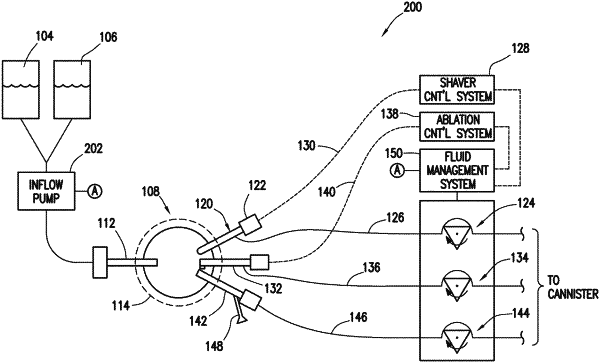| CPC A61B 17/320016 (2013.01) [A61B 17/1664 (2013.01); A61B 17/1675 (2013.01); A61B 17/1682 (2013.01); A61B 17/1684 (2013.01); A61B 17/1686 (2013.01); A61B 17/32002 (2013.01); A61M 1/77 (2021.05); A61M 1/82 (2021.05); A61M 3/0241 (2013.01); A61M 3/0258 (2013.01); A61B 1/00009 (2013.01); A61B 1/015 (2013.01); A61B 1/317 (2013.01); A61B 2017/00544 (2013.01); A61B 2017/00973 (2013.01); A61B 2018/00577 (2013.01); A61B 2018/1253 (2013.01); A61B 2018/126 (2013.01); A61B 2018/1266 (2013.01); A61B 18/16 (2013.01); A61B 2217/005 (2013.01); A61B 2217/007 (2013.01); A61M 2205/3334 (2013.01)] | 30 Claims |

|
1. A method comprising:
supplying fluid to a surgical site inside a patient's body;
drawing fluid from the surgical site through a first instrument by a first pump at a first flow rate; and then
performing a surgical resection within the surgical site using the first instrument, the performing the surgical resection initially causes the first pump to draw the fluid at a second flow rate that is different from the first flow rate; and
during or after the surgical resection, automatically adjusting, by a fluid management system, the first pump to draw fluid at a third flow rate that is different from the second flow rate, the third flow rate based at least on a type of surgical resection, an aggressiveness of the surgical resection, and at least one of:
an amount of time of the surgical resection; and
an amount of time since the surgical resection has ended.
|